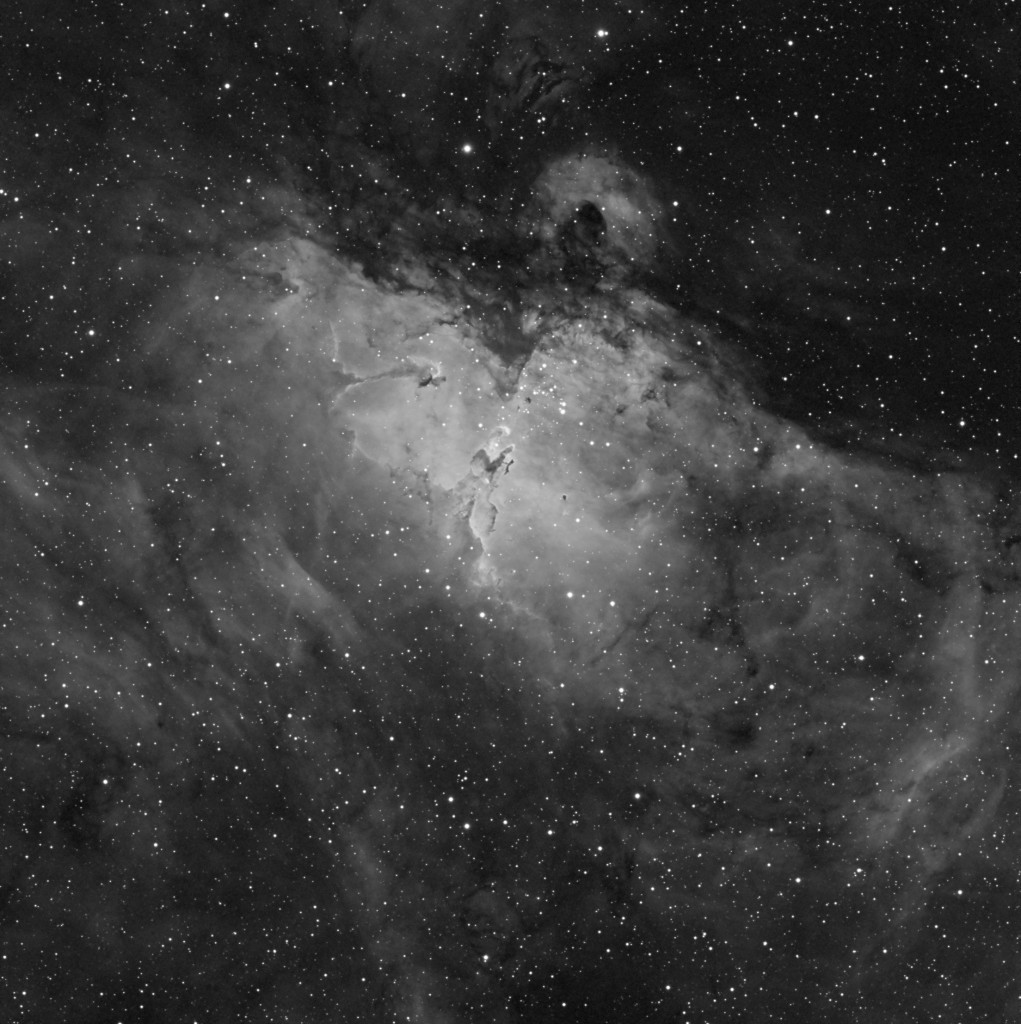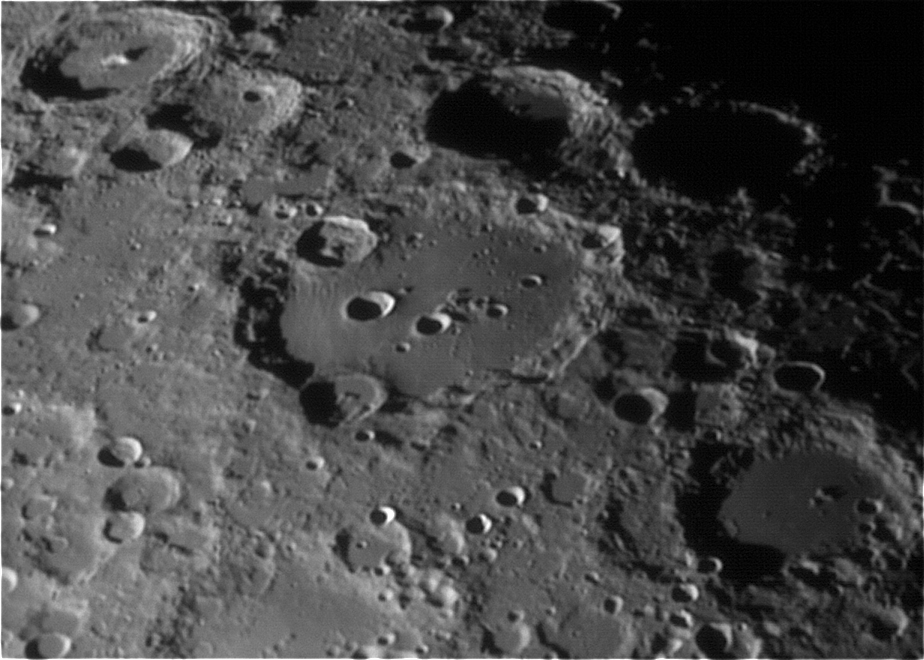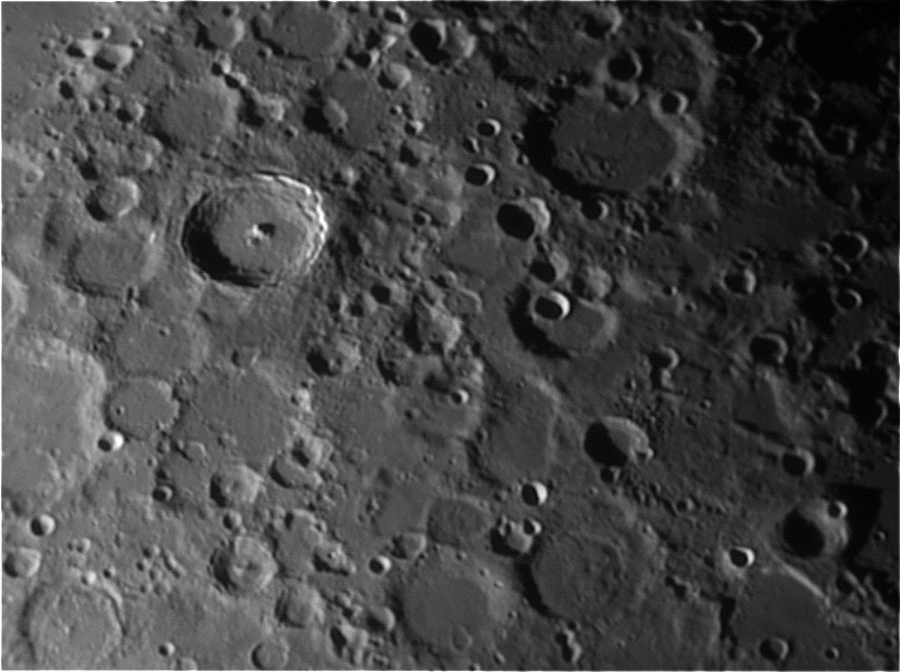The night started off hazy with a big halo around the 68.5% illuminated waxing moon. I wasn’t that optimistic about the high thin stuff clearing out so I threw the Lumenera monochrome high frame rate planetary camera on the scope instead of the usual deep sky camera and trained the scope on the moon for the public. I added a wireless game-pad so they could drive the mount around and check out different parts of the moon on their own and hopefully add to their enjoyment. After most of the guests had left I took a few videos and stacked them. Unfortunately, the laptop is not setup for planetary imaging; hard drive space is very limited on the small SSD and I had to move each AVI to a flash drive as I took them…
Luckily, it cleared up and the high thin stuff dissipated. I grabbed the deep sky camera and got to work on M16, The Eagle Nebuka, in Sagittarius.

M16 – The Eagle Nebula
Taken with a Stellarvue SVQ100, Apogee Ascent A694, Atlas EQ-G Mount, Baader 7nm Ha Filter. Exposure time 8x20min.

